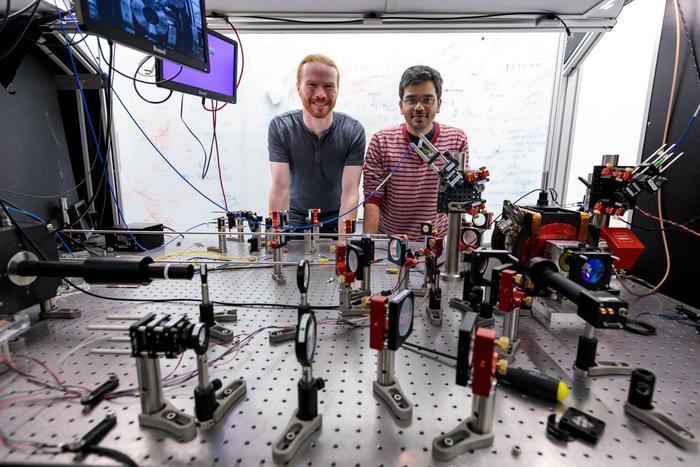Recognition
Christopher Monroe. It’s not a household name, that’s for sure. He’s not a guy instantly recognizable to the masses. Well at least if you’re not into quantum computing. If you are, though, he may be something of a hero to you.
American physicist Christopher Roy Monroe was born in Michigan in 1965. After gaining an undergraduate degree from MIT in the late 1980s, he went on to the University of Colorado, where he became part of Carl Wieman’s research group on the trapping of atoms and laser cooling technology which at the time was just developing. Later, in 1992, he got his Ph.D. under Wieman’s stewardship.
‘Quantum computers almost certainly won’t run social networks, animate Pixar movies, or keep track of airline reservations. They solve different problems in different ways.’
— Christopher Monroe

Impressive Resume
Three years later, at the National Institute for Standards and Technology (NIST), and with the help of Davis J. Wineland, Monroe achieved the ‘controlled-NOT gate’, the first-ever quantum logic gate that was able to entangle qubits successfully. This achievement was to have a lasting impact on the development of quantum computing. Incidentally, he spent most of the decade collaborating with Wineland at NIST’s Ion Storage Group.

At the turn of the new millennium, he established a research group at the University of Michigan, Ann Arbor. The research team was the first to achieve an ion trap integrated on a semiconductor chip while at the same time working on how qubits’ memory as individual photons could work for quantum networking.
All heavy stuff, considering.
From this groundbreaking work, Monroe suggested that sending atomic ions through ion traps could lead to scalable, workable quantum computers.
In 2007, Monroe moved east as the Bice Zorn Professor of Physics at the University of Maryland and a Fellow of the Joint Quantum Institute between the University of Maryland and NIST.
It was in these years that his team achieved quantum entanglement/teleportation between two qubits located from a greater distance than ever recorded.
In 2015, after nearly thirty years in academia, Monroe entered the dog-eat-dog world of the startup, co-founding IonQ where he currently serves as chief scientist.
The Startup IonQ
IonQ, at the forefront of quantum computing research in the United States, manufactures full-stack quantum computers based on trapped ion technology to manipulate qubits.

Others in the space use extremely cold solid-state circuits frozen to absolute zero for the process. Another method, equally popular, is to use lasers to influence qubits in electrical fields. The vacuum created, purer than deep space, levitates the atoms while eliminating decoherence.
Apples and oranges.
Monroe, who has spent over twenty-five years researching quantum computers, is adamant they will represent the next great technological epoch. Notwithstanding Google’s latest claims to reaching the holy grail of quantum supremacy in September 2019, the hullabaloo hasn’t stopped him from being more down to earth in his estimation of the potential in QC:
‘The big quantum computing discoveries that will most impact society are still years away. In the meantime, we will see breathless announcements of records broken as the technology rapidly develops. These incremental advances are important for government, which has a role in encouraging this research, as well as for industries that need to start developing ways to use quantum computers as they become more powerful. But too much hype risks disillusionment that may slow the progress.’
True that!
Real Capabilities
Another aspect Monroe highlights is about quantum computers’ real capabilities.
They won’t replace classical models.
They won’t be for games.
They won’t even be able to reserve your airline tickets.
A normal computer processor can handle all that stuff, sweetly.
What they will do, he believes like many in the industry, and do extremely well – is factorize extremely high numbers.
Or virtual experiments that demand a large amount of data to execute.
Seems mundane, doesn’t it?
And it is. The most intractable problems always are.
A true quantum leap
— From the IonQ website
Bridging The Gap
Unlike David Deutsch and John Stuart Bell, whose contributions in the QC space have been mostly theoretical and speculative in nature, Monroe’s contribution has, more importantly, spanned both the academic and business worlds, bridging the gap between the stuffy, meritocratic world of the university campus and the cutthroat arena of big business.
Like the other experts in the QC industry, Monroe is on a mission to prove the very small can play a very big part in the next technological revolution.
Christopher Monroe, Esq, the Michigan Magician.



















